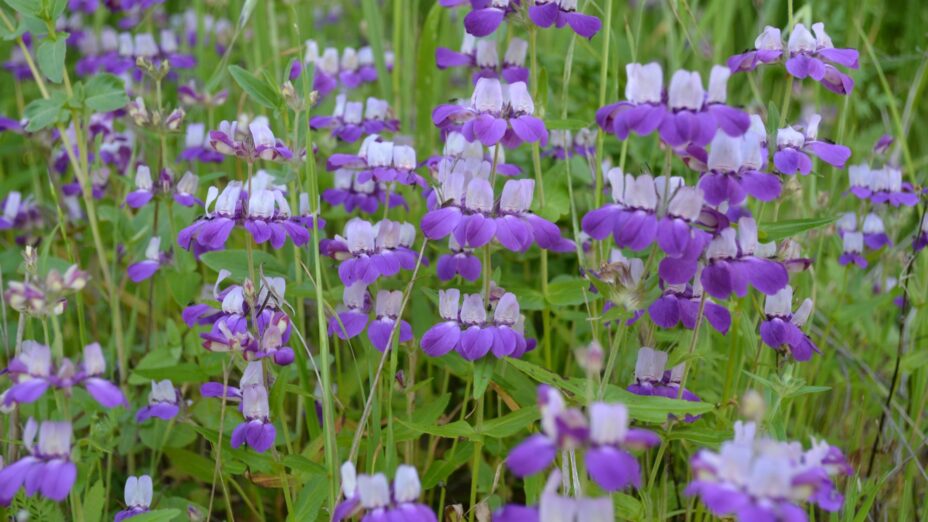
Save Mount Diablo has eight months left to raise the $1.455 million needed to acquire and steward the Ginochio Schwendel Ranch. Please make a gift today!
Springtime Blooms!
From February through the beginning of summer, from when the land turns lush and green to when the hills turn golden, a huge assortment of flowers pops up here.
It’s a treat to see all the wildflowers at the Ginochio Schwendel Ranch.
Flowers that we’ve found growing abundantly throughout this property’s oak woodlands this spring include
- California buttercups (Ranunculus californicus),
- yarrow (Achillea millefolium),
- Ithuriel’s spear (Triteleia laxa),
- blue dicks (Dipterostemon capitatus),
- fiddleneck (Amsinckia intermedia),
- purple Collinsia (Collinsia heterophylla),
- Henderson’s shooting stars (Primula hendersonii),
- Pacific hound’s tongue (Cynoglossum grande), and of course,
- the endemic Mount Diablo fairy lantern (Calochortus pulchellus).
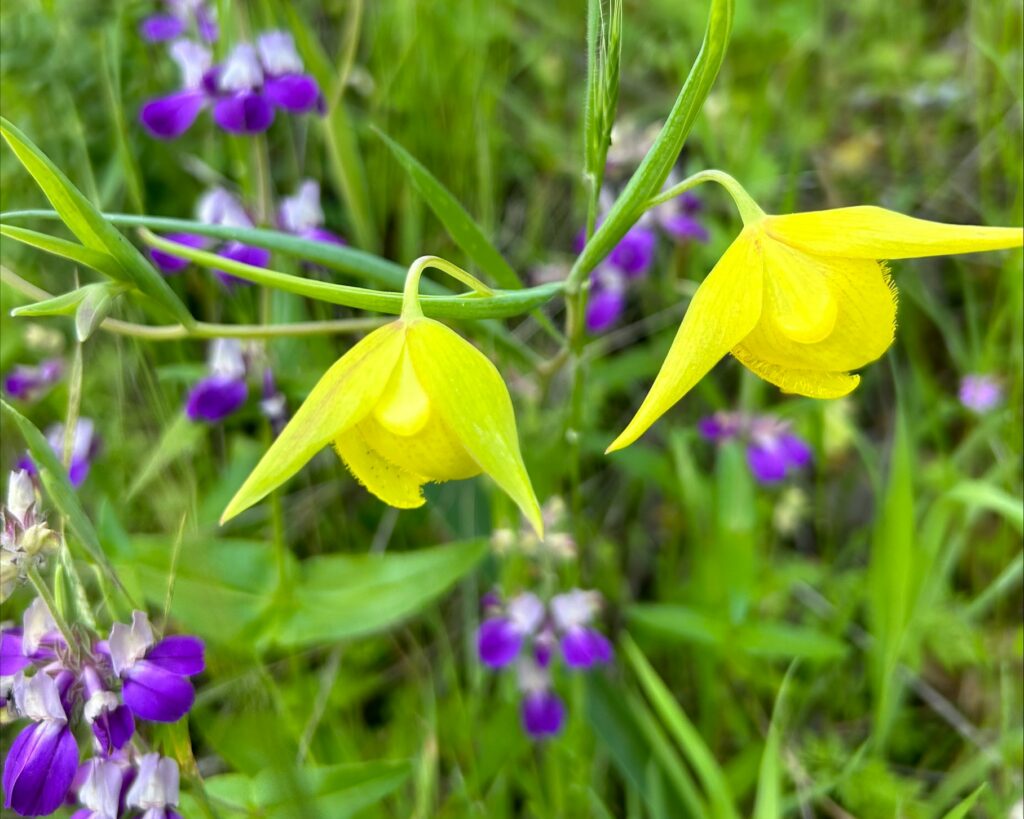
Mount Diablo fairy lantern (which only grows in the Mount Diablo area) and purple Collinsia. Photo by Mary Nagle
Someone standing atop the higher elevations of the ranch can enjoy sweeping views of Mount Diablo, Dark Canyon, and much of the Marsh Creek watershed, all of which connects to this land.
The Ginochio Schwendel Ranch Rocks!
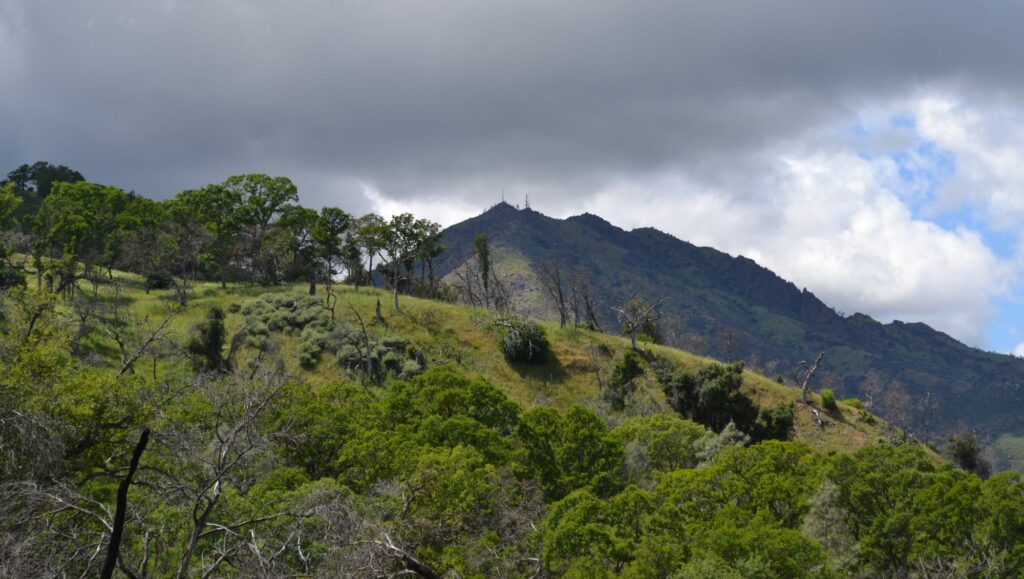
Mount Diablo’s North Peak (in the distance), seen from the Ginochio Schwendel Ranch. Photo by Mary Nagle
We can thank this area’s unique geology for Ginochio Schwendel’s abundance of native plants.
Much of the land along Marsh Creek contains unusual volcanic habitat, making it a great place for rare plants to grow. Evidence of this unusual geology can be seen from far away in the area’s distinctive steep dome-like formations.
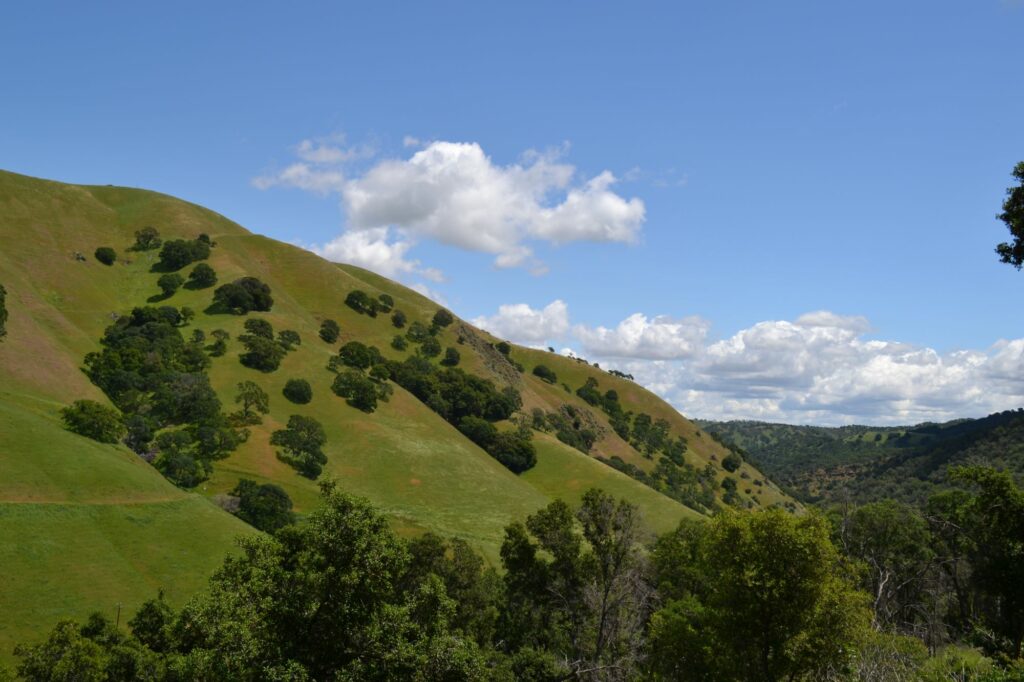
View of the canyon and watershed. Photo by Mary Nagle
These volcanic domes are noticeably steep because they are made up of high-silica igneous rock, which resists erosion a lot more than the softer sedimentary rock that surrounds it.
Not only are these volcanic domes rare, their soils also retain water more than surrounding areas, helping them better support landscapes filled with rare plants.
We’ve been working for years to protect and steward this distinctive habitat; some of our protected properties along Marsh Creek, such as Marsh Creek 5 and 6, contain these rare volcanic domes.
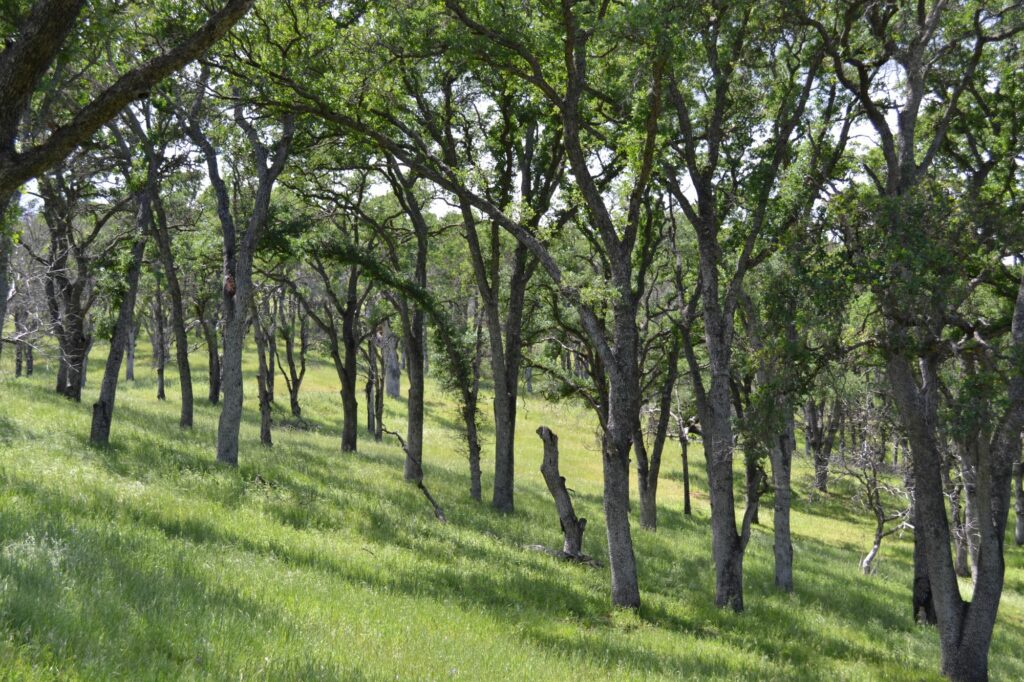
Blue oak forest at Ginochio Schwendel Ranch. Photo by Mary Nagle
We need your support to save a biodiverse, geologically distinct piece of nature at the 98-acre Ginochio Schwendel Ranch. We have eight months left to raise the 1.455 million needed to acquire and steward this land.
Will you help us permanently protect the Ginochio Schwendel Ranch? Please donate today!

